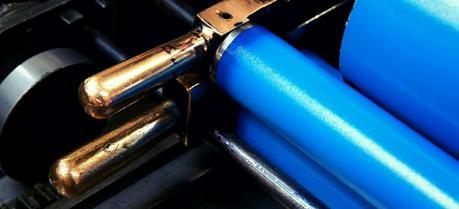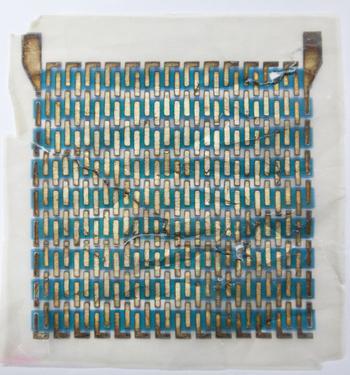 Phthalocyanine Blue BN is a standard pigment used in printing ink and the packaging industry and also a leading material used in organic solar cell research. (Credit: Flickr @ Marcin Wichary http://www.flickr.com/photos/mwichary/)
Phthalocyanine Blue BN is a standard pigment used in printing ink and the packaging industry and also a leading material used in organic solar cell research. (Credit: Flickr @ Marcin Wichary http://www.flickr.com/photos/mwichary/)
The problem of adding some color to the solar cells is not simply a question of graphic design (although, the idea of coating buildings with graphene surely promises some interesting sights in the future). As it turns out, some car paint, or rather some chemicals used in it, can be applied to create cheap and efficient solar cells.
Assistant chemistry Professor Trisha Andrew at the University of Wisconsin-Madison is developing new solar cell technologies that will use dyes containing carbon and aluminum. Rather than requiring a glass base, the organic dyes Andrew uses can be laid down on material as light and inexpensive as paper.
“I believe these are contenders for next-generation solar cells because we can make them lightweight and ultraportable, and since the starting materials are so cheap, they’re essentially disposable,” says Andrew.
“It turns out that the same fundamental properties that give dye molecules their color also allow them to conduct electricity and generate power,” says Andrew, whose research earned her a spot on the 2012 Forbes “30 Under 30 in Energy” list. “I want to take car paints and make them into solar cells.”

Photo by Matthew Wisniewski/Wisconsin Energy Institute
Professor Andrew and her colleagues are working with copper phthalocyanine, otherwise known as phthalocyanine blue BN, monastral blue or phthalo blue. This compound was first developed as a pigment in the mid-1930s and is now widely used in paints and dyes. It is also a standard pigment used in printing ink and the packaging industry and a leading material used in organic solar cell research.
“If you have blue anything—blue plastic, a blue car, blue clothes—it comes from copper phthalocyanine,” says Andrew.
“The cool thing about organic solar cells is that you can make very thin films out of them because they’re brightly colored, due to the fact that the dye absorbs a lot of light. In fact, organic dyes absorb the most light out of any material out there.”
Andrew already created a prototype solar cell using copper phthalocyanine and a small amount of the same red pigment used to make “Ferrari Red” car paint. As it can be seen on the photo, the stripes of blue dye interwoven with metallic wires are literally printed on a piece of paper.
Because the dyes are so intense, layers only need to be about 50 nanometers thick to absorb enough light to power a solar cell (for comparison, the diameter of human hair varies from 17,000 to 180,000 nm). Andrew’s hope is that once they have been optimized, the energy technologies coming out of her lab will be efficient and affordable enough to power consumer electronics ranging from rooftop solar panels and alarm clocks to cell phone chargers and coffeemakers.
The story is based on an article by Celia Luterbacher (see footnote)

